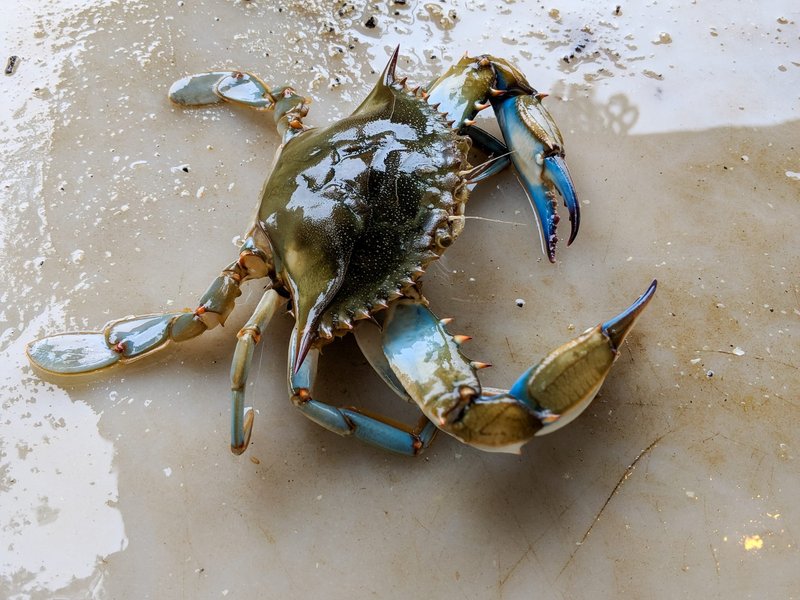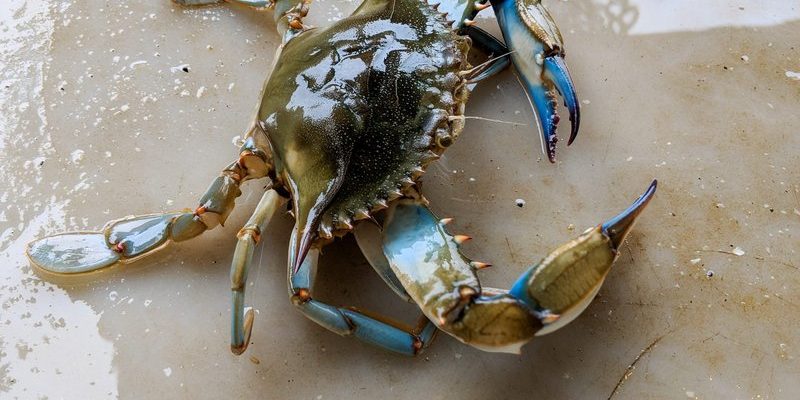
First off, blue crabs aren’t just pretty; they’re also incredibly important to their ecosystems and local economies. These fascinating creatures are found along the Atlantic Coast and the Gulf of Mexico, making them a staple for fishermen and foodies alike. So, whether you’re enjoying a crab boil or just curious about these creatures, let’s dive in!
1. They Change Colors
One of the coolest things about blue crabs is their ability to change colors. When they’re alive, their shells are a vibrant blue hue, especially on their claws. But here’s the catch: when they’re cooked, they turn bright orange or red. It’s like they have their own transformation process, similar to how a caterpillar becomes a butterfly. This change happens due to a reaction between the heat and a pigment called astaxanthin, which is present in the crab’s shell. You might’ve seen it when you ordered crab legs; that contrast is eye-catching!
Moreover, juvenile blue crabs can actually be brown or green before they develop their stunning blue coloration. So, if you come across a crab that doesn’t look blue, it might just be in its teenage phase, waiting for the right moment to flaunt its true colors.
2. They Are Highly Mobile
You might think crabs aren’t the best athletes, but blue crabs are surprisingly good at moving around! They use their legs to scuttle quickly across the seafloor, using their long claws for balance. When they sense danger, they can dart away or even swim backward in a flash. It’s kind of like having a built-in escape plan.
Their mobility allows them to hunt for food, evade predators, and explore different habitats. Blue crabs primarily live in estuaries, mangroves, and coastal waters. This versatility helps them adapt to various environments, making them quite the survivors in the wild.
3. They Have Unique Life Stages
Blue crabs go through several life stages, and each stage is unique and important. They start as tiny larvae that float around in the ocean for weeks before settling to the seafloor. Once they settle, they undergo a process called molting, where they shed their old shell and grow a new one. This process can happen multiple times a year as they grow!
As they age, blue crabs gradually develop their distinctive blue coloration and larger claws. It’s fascinating to think about where they start and how far they go. Each stage is crucial for their growth and survival and helps scientists understand their populations better.
4. They Play a Role in Their Ecosystem
Blue crabs are more than just seafood; they’re an essential part of the ecosystem. They help control the populations of small fish and other marine organisms. By eating these smaller creatures, blue crabs maintain a balance in the food chain. Without them, the ecosystem could face serious challenges.
Additionally, blue crabs serve as food for various predators, including birds, larger fish, and even humans. This interconnectedness means that protecting blue crab populations helps preserve the entire marine environment. So, every crab in the water is a vital player in maintaining ecological harmony.
5. They Have a Unique Mating Ritual
When it comes to romance, blue crabs have a fascinating courting ritual. Male blue crabs are known for displaying their claws to attract females. They don’t just rely on their looks; they also engage in a little dance. This involves raising and waving their claws in a show of strength and vitality, inviting the females to mate.
Once a female is ready, she’ll often choose a mate based on these displays. After mating, she will store the male’s sperm until she’s ready to fertilize her eggs. This means that a single mating session can result in several batches of eggs, making each pairing an important event for the future of their species.
6. They Can Live for Several Years
While many people think of blue crabs as a seasonal delicacy, they can actually live for several years in the wild! On average, they may live up to 3-4 years, although some can live longer. Their longevity depends on several factors including their environment, food availability, and how well they can avoid predators.
When you see a blue crab on your plate, remember that it’s not just a meal; it’s a creature that has navigated the waters for years. This makes enjoying blue crab a little more special—each bite tells a story!
7. Their Diet is Diverse
Blue crabs are omnivores, meaning they eat a variety of foods. Their diet includes fish, clams, oysters, and even detritus (that’s organic matter like dead plants and animals). This dietary flexibility contributes to their success in various environments.
Their eating habits also help maintain the health of marine ecosystems. By consuming different types of organisms, blue crabs help control populations and recycle nutrients back into the ecosystem. So, while you might think of them as just crab cakes on your plate, they’re actually quite the active participants in their environmental community.
8. They’re Important to Economies
Blue crabs are not just a tasty treat; they’re also a major part of local economies. In the United States, especially along the East Coast, blue crab fisheries contribute millions of dollars each year. From restaurants to seafood markets, the demand for blue crab is strong and growing.
Fishermen often rely on sustainable practices to ensure that blue crab populations remain healthy. This balance between fishing and conservation is crucial for future generations to enjoy this seafood staple. So next time you’re at a seafood restaurant, remember the economic and environmental impact behind those delicious blue crab dishes.
9. They Are Subject to Conservation Efforts
Because blue crabs are so important, there are many conservation efforts in place to protect their populations. Overfishing and habitat loss can threaten their numbers, leading to stricter regulations on fishing practices.
Many areas have set limits on how many crabs can be caught each season and have established seasons to allow populations to recover. It’s all about balance—ensuring that people can enjoy blue crabs while also protecting them for the future. Before you dig into your next crab boil, think about the conservation efforts that make it possible.
10. They Have Cultural Significance
Blue crabs are more than just a food source; they have cultural significance in many regions. In places like Maryland, the blue crab is not just a dish but a symbol of local identity. Annual crab feasts are celebrated with families and friends gathering around to enjoy this seafood delight.
These gatherings often feature stories, laughter, and a sense of community, turning a meal into a cultural event. It’s a beautiful reminder of how food can bring people together, creating connections that go beyond just a tasty meal.
In conclusion, blue crabs are remarkable creatures with a host of surprising facts that go beyond their culinary appeal. From their unique life stages to their essential role in the ecosystem and economy, they’re a reminder of the complexity of nature. So, the next time you enjoy blue crabs, take a moment to appreciate all the amazing things that make them special. Whether you’re a seafood lover or just curious about the world, these little crabs have quite the story to tell.

